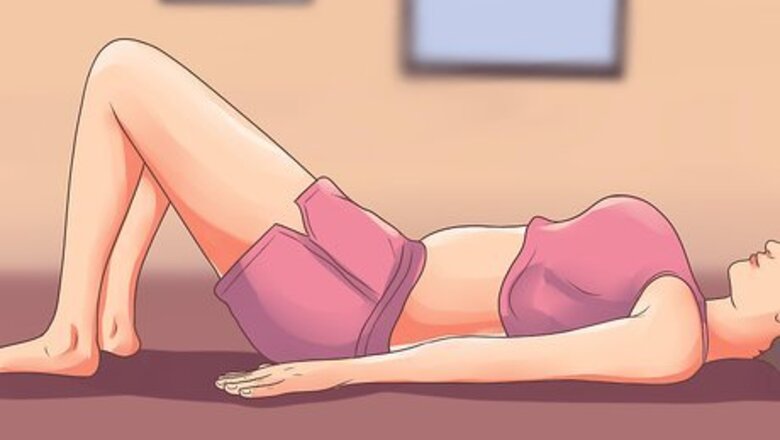
views
Exercising the Stomach
Talk to your doctor before you begin exercising. While exercising is a great way to get your body into shape, it's important to talk to your doctor so you know when it's safe to begin doing different exercises. Right after you have your baby, exercises like crunches, sit-ups, and planks can put a lot of pressure on your weakened abdominal wall and pelvic floor. If you have any abdominal separation due to childbirth, exercising too soon could make that worse. This can end up causing other muscles to compensate, like your lower back and hip flexors. There's no set length of time for when you'll be ready to return to exercising, but generally, it takes about 6-10 weeks for you to be able to feel your core engage correctly. Right after you give birth, you may be able to do gentle exercises like mindfully engaging your core or balancing yourself while sitting on an exercise ball.

Start with pelvic tilts. Exercising right after pregnancy can be daunting, but as long as you increase intensity slowly, it is completely safe and healthful for most people. Pelvic tilts are a great way to strengthen your abdominal muscles without overworking them. Lie on your back with your knees bent. Flatten your back against the floor, tighten your abdominal muscles, and bend your pelvis up slightly. Hold for up to 10 seconds. Repeat 5 times and work up to 10 to 20 repetitions.
Strengthen your pelvic floor with Kegels. Kegels, or pelvic floor exercises, help build strength in the muscles that support your uterus, bladder, and rectum. These muscles are often weakened after pregnancy and childbirth. Find your pelvic floor muscles by stopping your urine midstream. Then, after you have emptied your bladder, lie down in a comfortable position. Tighten your pelvic floor muscles for 5 seconds, then rest for 5 seconds. Repeat 4-5 times. Once you’ve gotten the hang of doing Kegels, gradually work your way up to tightening your pelvic floor muscles for 10 seconds at a time, with 10 second rests in between. Try to do 3 sets of 10 repetitions every day. Remember to breathe normally when you are doing Kegel exercises.
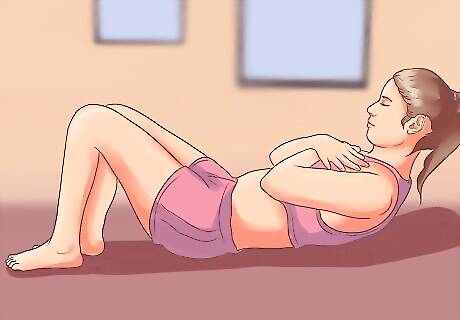
Strengthen your abdominals with crunches. As you build confidence in your post-pregnancy strength, crunches can be a good step up from pelvic tilts. In order to do crunches: Lie on your back, feet down, knees up and arms in front of your chest or hands lightly touching your temples. Using only your abdominal muscles, raise your shoulders (upper torso) towards your knees. As you lift, exhale. Pause, and then lower yourself to your original position while inhaling, making sure to keep your head off the ground. Repeat.
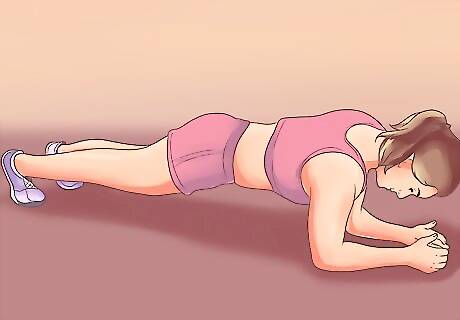
Do static holds (planks). Because crunches focus mostly on the outer layer of abdominal muscles, it is important to also train the interior muscles critical to posture and stability. Static holds are a great way to strengthen these muscles. Lie on your stomach, with your forearms flat on the floor, creating a right angle at your hands. Rise off the ground, lifting your chest and midsection off the ground. Your only points of contact with the ground should be your forearms and toes. Maintain a straight back, without allowing your rear to dip down or to stick into the air. This position is also known as the plank, and it trains your core (including your abs) to hold the body in place. Hold this position for as long as possible. Beginners should start with multiple sets of about 30 seconds each.
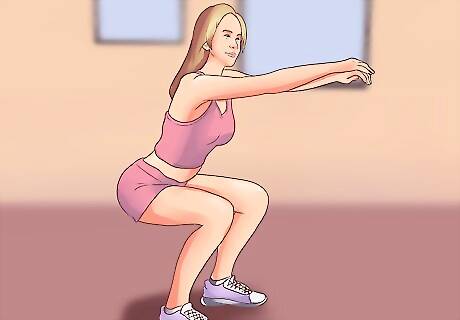
Train your entire core. During pregnancy, it is easy to become sedentary due to the physical and mental burden placed on you. However, once you have achieved a solid base of abdominal strength, it is a great time to move on to full body fitness with a continued focus on the core. Try compound exercises that train your abs in conjunction with the rest of your body. Some of the best compound exercises for abs are ones that force your entire core to support your spine. Some exercises that do this are squats and push ups.
Dieting to Lose Weight
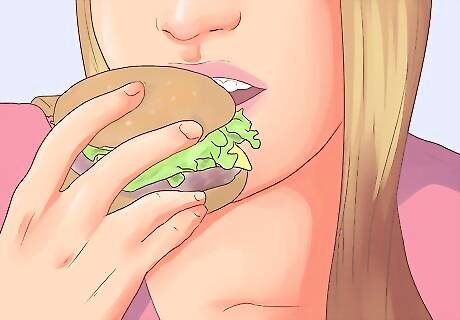
Use more calories than you consume. In order to lose weight, you must expend more calories than you consume. When you have a caloric deficit, your body consumes energy stored in fat cells, reducing their size. Over time, this results in weight loss. Conversely, even if you are working out intensively, overeating and poor nutrition could still prevent you from toning up or losing any weight, due to the amount of calories you are taking in outnumbering the amount you are expending.
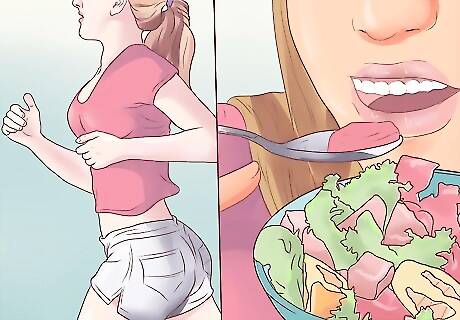
Be realistic. It took 9 months to gain the 25-35 pounds (11-16 kg) recommended by doctors during your pregnancy, and it will take about that long to lose them. Don't fall for the hype of instant weight loss plans. Instead, use moderate exercise and healthy eating to ensure that you are on the road to fitness. Don't put too much pressure on yourself to lose the weight quickly—it's healthier to do it gradually, and it's normal to still have a bit of a belly for a while after you have a baby.

Be careful not to diet too early. Wait at least until your 6-week postpartum checkup before actively trying to slim down. If you are breastfeeding, it is recommended that you wait 2 months before actively dieting. You want to make sure you have the energy to care for your new baby, and if you begin dieting too quickly, it can stunt your recovery. Losing weight at a healthy pace and waiting 2 months establishes a good milk supply for the baby. Breastfeeding can also help you lose weight. Your body consumes fat stores and dietary calories in order to produce milk, leading to weight loss.
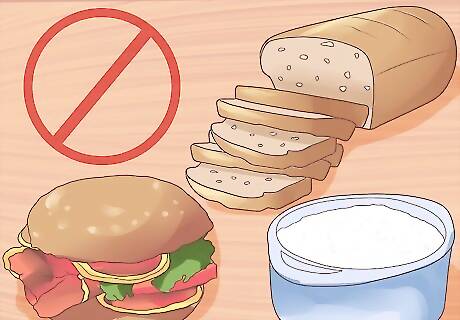
Avoid empty calories. Empty calories, including many types of sugars, simple carbohydrates, and unhealthy fats, contribute to weight gain. Although these may include some of your favorite comfort foods, steer clear of ice cream, soda, pastries, and most other desert items and processed foods in order maximize your chances of achieving a toned stomach. If you crave sweets, consider swapping cake and ice cream for fruit and berries. Fruit is naturally sweet and has a variety of nutritional benefits, ranging from vitamin content to antioxidant support. Avoid "white" products, such as white bread and white rice, that have been bleached and robbed of their nutritional benefit. Instead, opt for whole-grain bread, brown rice, quinoa, and unbleached oats. Shop from the edges of the supermarket, instead of from the center. Since many un-processed fresh foods are kept refrigerated, or are regularly replenished, they are often stocked around the perimeter of the grocery store. By shopping from these areas, you will avoid the refined sugars and fats found in many packaged goods in the aisles.
Get plenty of calcium. Many women don’t get enough calcium during and after pregnancy. If you are pregnant or breastfeeding, you should be ingesting 1,000-1,300mg of calcium per day. Talk to your doctor about taking calcium supplements, and make sure to include plenty of calcium-rich foods in your diet. You can get dietary calcium from: Dairy products, such as milk, yogurt, and cheese. Leafy green vegetables, such as broccoli, kale, collard greens, Chinese cabbage, or spinach. Fish with edible bones, such as canned sardines, mackerel, or salmon. Calcium-enriched foods, including many breakfast cereals and fortified juices.

Consider a plant-based diet. Diets high in vegetable protein and low in animal fats have been linked to weight loss, reduced risk of heart disease, and many other health benefits. Switching to a plant-based diet can help you slim down, as well as keep you healthy after your pregnancy. Go green. Leafy greens, such as kale, collards, spinach, and chard are full of healthy fiber, vitamins, and micronutrients. Eat fruit. Fruit can satisfy your sweet tooth, as well as provide a variety of under-consumed vitamins and nutrients, including potassium, dietary fiber, vitamin C, and folate. Experiment with new recipes. Many regions around the world eat mostly vegetarian diets. Turn to some of these regions for exciting new dishes that are both delicious and nutritious.
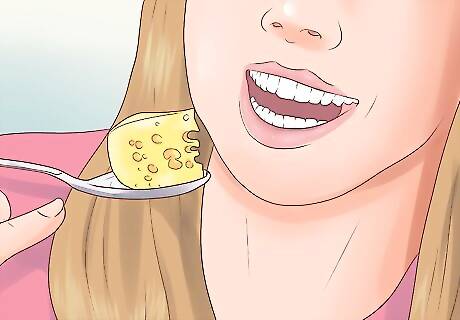
Pay attention to portion size. Especially after pregnancy, it is important to recognize that eating smaller portions can help increase weight loss. You are no longer eating "for 2," and must adjust your diet to reflect this change.
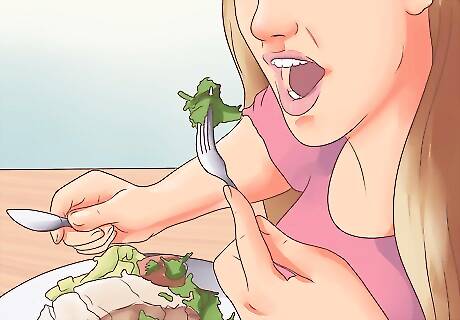
Eat smaller meals late at night. By eating large meals earlier in the day, the likelihood of overeating late at night decreases. Additionally, late at night you are more likely to eat unhealthy snack items high in sugar, fats, and simple carbohydrates. Your metabolism also slows down during sleep. This means that food you consume right before bedtime will not be digested as efficiently as it would during the day, and more of it will be converted into fat.
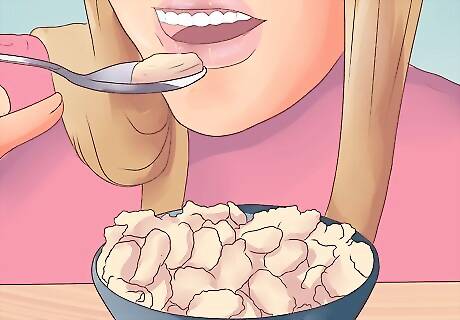
Eat breakfast. Eating breakfast jumpstarts your metabolism, allowing you to more effectively process food and preventing you from becoming extra hungry throughout the day. This reduces your chances of overeating and negating any progress you may have made through exercise.

Drink more water. Drinking water will not only help you remain hydrated and aid in your recovery from pregnancy, it will also allow you to more accurately determine whether or not you are actually hungry, or just craving food. Additionally, drinking cold water may burn more calories than drinking room temperature water, because of the energy expended to heat the water to body temperature. Milk production also leads to extra fluid loss, so take extra care to stay hydrated if you have chosen to breastfeed your baby.
Changing Lifestyle to Improve Health

Get enough sleep. Although it may be hard to sleep the recommended eight hours per night with a newborn in the house, you should still try to get as much sleep as possible. Having a baby is hard work, and you need to allow your mind and body the appropriate amount of time to recover. Sleep allows the body to properly recover from exercise and gain the maximal benefits from a workout, as well as digest food effectively.

Control stress. Controlling your stress levels after pregnancy may seem like a daunting task, but it is crucial to increased overall health. Excessive stress has also been shown to encourage storage of fat in the abdominal region, hampering your goal of a toned stomach. Low stress levels have been linked to overall weight loss, among a variety of other health benefits. Managing stress will allow you to focus on your exercise and diet goals, while making it easier to keep off fat. Even taking a few minutes a day to meditate can help reduce your stress levels.
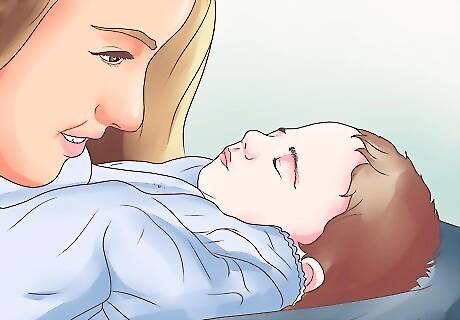
Divide responsibility. When you have a new baby, it can be difficult to effectively divide parenting duties and responsibilities. However, doing everything alone can lead you to neglect your own health. Enlist the help of your significant other, family, or a hired professional to share the burden of caring for your child. Divide duties such as diaper-changing, cooking, recreation, doctor's appointments, and the like between you and whoever is willing to help. This will allow you to get the time you need to focus on your physical and mental health.

Quit drinking. In addition to many other negative health effects, alcohol consumption can significantly chip away at any weight loss progress you make through dieting and working out. It is easy to forget how many calories can be consumed in alcoholic beverages, and drink away all your progress towards a toned stomach. In addition, alcohol stimulates your appetite, driving you to eat when you may otherwise not be hungry.


















Comments
0 comment